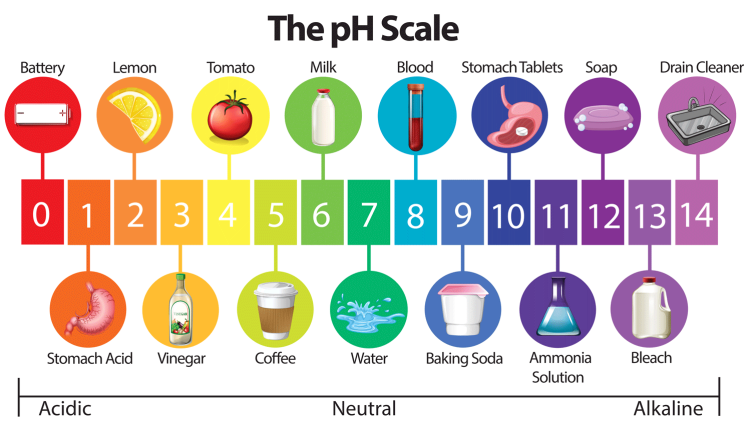Carbohydrates, known as carbs for short, are a controversial nutritional topic. Some people believe that carbs are fattening and unhealthy. Consequently, they follow a low-carb diet, such as Atkins or Keto, often limiting their carb intake to 50 grams per day or less. Learn more on low-carb alternatives to bread, potatoes, rice, and pasta.
Conversely, other people prefer to consume large amounts of carbs. In fact, it’s often the most abundant macronutrient, making up 60% or more of the kilocalories consumed. This is especially true for endurance athletes.
Some exercisers cycle their carb intake, having high and low-carb days based on their training routine.
In reality, carbs are not inherently bad for you, and moderate amounts of carbs can enhance health and athletic performance. As with many dietary arguments, the answer is to do what suits you best and what you prefer. That said, some carbs are better for your health and performance than others.
One way to choose between different carb sources is to use the glycemic index (GI).
GI is a rating scale for how quickly a consumed carbohydrate affects your blood glucose (1). Originally designed for people with diabetes for better blood glucose management, GI can also help athletes and exercisers pick the right carbohydrates for their needs and goals.
Level Up Your Fitness: Join our 💪 strong community in Fitness Volt Newsletter. Get daily inspiration, expert-backed workouts, nutrition tips, the latest in strength sports, and the support you need to reach your goals. Subscribe for free!
I’m a veteran personal trainer with over 30 years of experience and a special interest in nutrition. In this article, I explore the benefits and usefulness of GI and explain how you can use it to optimize your energy, performance, weight management, and health.
GI and Energy Levels
Your body runs on a substance called adenosine triphosphate, or ATP for short. At low levels of activity intensity, your body produces ATP from fats, e.g., at rest or during a walk or easy run.
However, as intensity levels rise and you move from aerobic to anaerobic energy production, your body uses less fat and more carbohydrates. Carbohydrates are broken down and utilized as glucose, which is a form of sugar.
That glucose circulates in your blood and is either used as:
- Instant energy
- Stored as muscle glycogen
- Converted to and stored as body fat
The glycemic index is a 1-100 scale for rating how quickly the carbs you eat are broken down into glucose and enter your bloodstream. Broadly speaking, foods are rated as high, medium, or low glycemic index, but you could also say the carb in question is fast, moderate, or slow-acting.
- Low GI: 55 or less
- Medium GI: Between 56 and 69
- High GI: 70 or higher
Low blood glucose levels can negatively impact levels and athletic performance, reducing exercise intensity and duration (2). Exercisers with low blood glucose typically fatigue faster than those starting with higher blood glucose. Subsequently, it’s generally best to consume carbs before exercise so you start your workout or event with high blood glucose levels.
However, because of differing rates of digestion, some carbs raise your blood glucose and, therefore, your energy levels quicker than others. Consequently, it’s entirely possible to eat the wrong type of carbs before exercise and miss their energy-boosting effect.
For example, suppose you consume high GI/fast-acting carbs several hours before a workout. In that case, they’ll be digested long before your session, and your blood glucose levels will have fallen.
In contrast, consuming low GI/slow-acting carbs immediately before exercise means you won’t experience much of a rise in blood glucose, again missing that carb energy boost.
Low vs. High GI Foods
We often categorize carbohydrates as simple and complex, refined and unrefined. While this is some useful information, the glycemic index provides more usable data regarding how quickly the food in question is digested and converted to glucose.
As outlined above, low GI foods score 55 or less, while high GI foods score 70 or more. Medium GI foods score from 56-69. Knowing the GI of carbohydrates can help you choose the best food for the right time, relative to your workout.
Here is a short table highlighting ten high, medium, and low GI foods:
| Low GI | Medium GI | High GI |
| Apples | Bananas | Bagels |
| Beans (black) | Couscous | Cornflakes |
| Chickpeas | Honey | Doughnuts |
| Lentils | Muffins (whole grain) | Instant white rice |
| Milk (whole) | Oatmeal (rolled oats) | Jellybeans |
| Oranges | Pancakes (whole grain) | Popcorn |
| Peanuts | Pineapple | Pretzels |
| Quinoa | Rice cakes | Watermelon |
| Sweet potatoes | Rye bread | White bread |
| Yogurt (unsweetened) | Spaghetti (whole grain) | White rice |
You can check the glycemic index of your favorite foods here.
But Which Foods Should You Eat When?
High GI foods are best eaten shortly before exercise, e.g., 30 minutes to one hour. Within this time, the food consumed should be digested, converted to glucose, and available for energy. In contrast, low-GI foods take much longer to digest and need to be consumed 2-3 hours before the start of your workout.
This should ensure that your blood glucose and, therefore, your energy levels peak for your workout (3).
To Summarize:
- High GI foods are best 30-60 minutes before exercise
- Low GI foods are best 2-3 hours before exercise
- Moderate GI foods fall somewhere between these recommendations
Factors That Affect the Glycemic Index of Carbohydrates
The glycemic is a helpful tool for categorizing carbohydrates and choosing which carb to eat and when. High GI carbs are best consumed shortly before you begin exercising. In contrast, low-GI carbs work more slowly and should be consumed several hours before starting.
However, there is more to the glycemic index than meets the eye, and it’s not 100 percent accurate. That’s because there are several factors that affect a food’s GI.
How GI Is Calculated?
It’s not usually possible or practical for the average person to test and calculate the glycemic index of foods. However, it may be helpful to know how it’s done so you can see why GI is not always entirely accurate.
The glycemic index (GI) of a food is determined by measuring the increase in blood glucose over two hours after consuming a 50-gram portion of digestible carbohydrates. The sample carb is eaten in isolation, i.e., without other foods.
This measurement is then compared to the effect of a baseline food, typically pure glucose, which has a GI of 100. The glycemic index is the percentage relative to the reference food.
While this method reveals the glycemic index of a 50-gram serving of useable carbohydrates, that’s not typically how most people eat their foods. Instead, they eat varying amounts and combine foods, which can change the GI score.
Factors That Affect the Glycemic Index of Carbohydrates Include:
The ripeness of fruit – the riper the fruit, the more glucose, and the less fructose it contains, and the higher its glycemic index will be. For example, green and yellow bananas have a lower GI than brown bananas. However, bananas are generally listed as having a medium GI, even though they can also be low or high depending on ripeness. (4)
Presence of protein and fat – protein and fat are gastric inhibitors, meaning they keep food in your stomach for longer, delaying digestion and absorption. The longer a food remains in your stomach, the slower glucose is released into your blood, and the lower the GI will be. If you eat your carbs with protein or fats, the GI will decrease.
Degree of processing – processed foods are often deficient in fiber, which increases their GI. For example, white bread and white rice have a higher GI than their brown or unrefined counterparts. Like protein and fat, fiber is a gastric inhibitor.
Cooking method – cooking breaks down tough polysaccharides (long chains of glucose) into smaller oligosaccharides, which makes them easier to digest. Therefore, cooking some carbohydrates for longer will increase their GI.
Quantity – GI is calculated by comparing a 50-gram serving of useable carbs to 50 grams of pure glucose. However, most people consume larger servings than this. For example, to get 50 grams of useable carbs from brown rice, you’d need to eat about 200 grams. Larger portions tend to result in a higher glycemic response.
Level Up Your Fitness: Join our 💪 strong community in Fitness Volt Newsletter. Get daily inspiration, expert-backed workouts, nutrition tips, the latest in strength sports, and the support you need to reach your goals. Subscribe for free!
Acidity – acidic foods and the presence of acids can lower the GI of a food. For example, putting lemon juice or vinegar on some carbs may reduce their GI.
Individual variability – people often respond differently to carbohydrates. Glucose tolerance, gut bacteria, stress, genetics, and physical activity levels can all affect how a carb affects your blood glucose.
As you can see, there are lots of variables that affect the glycemic index of the carbs you eat. So, while GI is a general indicator of what carbs to eat and when, it is not 100% accurate. Other methods, such as glycemic load and real-time blood glucose monitoring, provide a more precise way to assess how carbs affect your blood glucose.
Impact on Health
While exercisers and athletes can use GI to help them choose what to eat before training, it started as a tool for the management of diabetes (4). Diabetes is a metabolic disease where patients have difficulty removing glucose from their blood. This can be because of insulin resistance (type 2) or too little insulin being produced (type 1).
However, even if you don’t have diabetes, chronically high blood glucose levels can be hazardous to your health. Issues commonly linked to high blood glucose include:
- Insulin Resistance
- Metabolic Syndrome
- Prediabetes
- Polycystic Ovary Syndrome (PCOS)
- Non-alcoholic Fatty Liver Disease (NAFLD)
- Cardiovascular Disease
- Obesity
- Hypertension (High Blood Pressure)
- Dyslipidemia (Abnormal Blood Lipid Levels)
- Chronic Kidney Disease (CKD)
- Cognitive Decline
- Erectile Dysfunction
- Sleep Apnea
- Chronic Inflammation
- Gestational Diabetes (during pregnancy)
Consequently, it makes sense to control your blood glucose to reduce your risk of these and other diseases. Studies indicate that Consuming more low-GI foods offers several health benefits, including (5):
- Better management of hunger and cravings
- Weight loss
- Reduced risk of cardiovascular disease
- Improved mood and cognitive function
- Lower risk of developing type 2 diabetes
- Reduced inflammation
- Support for hormonal health
- Lower risk of chronic diseases
- Long-term health and well-being
In summary, while high GI carbs are great for providing a pre-workout energy boost, most people should consume them in moderation and generally immediately prior to exercise. The rest of the time, low and moderate GI foods are the healthiest carbohydrate choice.
GI Myths and Misconceptions
The glycemic index has been in use for almost 50 years. During that time, it’s gathered several myths and misconceptions. In this section, I’ll address some of the most common.
All High-GI foods Are Unhealthy
While high-GI foods cause a rapid increase in blood glucose, that doesn’t mean all high-GI foods are automatically bad for you. For example, some high-GI foods are packed with beneficial vitamins and minerals, e.g., watermelon and some types of potatoes. Needless to say, eaten in moderation, these foods can be very healthy.
All Sugars Are High GI
Many people assume that all sugars are the same and have an equally high glycemic index. This is not the case. For example, fructose in fruit and lactose in dairy both have lower glycemic indexes despite being sugars.
The GI of a Food Never Changes
Published glycemic index scores are good indicators of how a food will affect your blood glucose, but they’re not 100% accurate. For example, the ripeness of fruit, cooking methods, and combining other foods can change the glycemic impact. So, use GI as a rough guide, but understand it’s not infallible.
Only Carbohydrate-Rich Foods Have a GI
While GI primarily categorizes carbohydrates, it’s important to note that proteins and fats can affect your blood glucose levels. However, because their impact is minimal, most GI charts don’t assign a GI value to non-carbs.
Low GI Foods Are Always Better
While low GI foods can provide numerous health benefits, including stable blood glucose and appetite management, that doesn’t mean they’re always your best choice. After all, some high-GI foods contain an abundance of vitamins, minerals, and other beneficial compounds. So, make sure you consider overall dietary quality and not just the GI.
Do you have a question about the glycemic index? Drop me a line in the comments section below, and I’ll answer it as soon as I can!
The Importance of a Balanced Diet
Nutrition is an emotive subject, and many people turn their diet into something akin to a religion. Instead of enjoying a balanced diet, they choose to eliminate foods or food groups because of something they’ve read or heard.
In most cases, there is no need to be so strict!
Sure, it’s generally best to avoid overeating, consuming too many refined foods, too much sugar, and drinking too much alcohol. However, with those guidelines out of the way, you can eat lots of different foods and still be healthy.
Related: Fix Your Diet Forever in Six Weeks!
The glycemic index falls into the category of useful but not essential. You can use it to help you choose a better carb for your pre-workout meal, but the rest of the time, it’s probably not that important. After all, the GI of a food is pretty unreliable, and most people eat carbs along with proteins and fats, which lowers their glycemic impact.
In fact, some studies even refute the proposed benefits of choosing foods based on GI for improved athletic performance (6).
So, while being aware of the glycemic index is no bad thing, there is no need to obsess over it. Instead, follow a balanced diet with whatever tweaks you need to match your fitness goals and lifestyle.
Glycemic Index – Closing Thoughts
I’ve paid quite a lot of attention to the glycemic index over the years, with my interest peaking when I was a competitive triathlete. That invariably meant low-GI carbs 2-3 hours before and fast-acting high-GI carbs 30 minutes before and during workouts.
This made sense given what we know about glycemic index, blood glucose, and their effect on performance.
Now, as a general exerciser and personal trainer, I’m less obsessed with GI. However, I still consider it when deciding what to eat and tend to favor low to medium-GI foods for their ability to provide sustained energy and keep me satiated.
That said, I’ve long since stopped obsessing over GI, and it’s just one of the things I think about when planning my meals. After all, GI is not entirely accurate and only gives you a rough idea of how carbs affect your blood glucose.
The moral of this story?
Eating according to the glycemic index has its advantages and benefits. Still, most people don’t need to worry about GI too much as there are more important nutritional considerations. In most cases, a balanced diet is all you need to be fit, lean, and healthy.
That said, if you want to optimize your exercise performance, paying more attention to the glycemic index of your carbs could help.
Related: Carbohydrate Loading: A Step-By-Step Guide for Increased Muscle Size
References:
- Ahmed J, Riaz M, Imtiaz R. Glycemic index and Glycemic load values. Pak J Med Sci. 2021 Jul-Aug;37(4):1246-1247. doi: 10.12669/pjms.37.4.4555. PMID: 34290817; PMCID: PMC8281178.
- Kelly D, Hamilton JK, Riddell MC. Blood glucose levels and performance in a sports cAMP for adolescents with type 1 diabetes mellitus: a field study. Int J Pediatr. 2010;2010:216167. doi: 10.1155/2010/216167. Epub 2010 Aug 2. PMID: 20811595; PMCID: PMC2929497.
- Heung-Sang Wong S, Sun FH, Chen YJ, Li C, Zhang YJ, Ya-Jun Huang W. Effect of pre-exercise carbohydrate diets with high vs low glycemic index on exercise performance: a meta-analysis. Nutr Rev. 2017 May 1;75(5):327-338. doi: 10.1093/nutrit/nux003. PMID: 28383695.
- Eleazu CO. The concept of low glycemic index and glycemic load foods as a panacea for type 2 diabetes mellitus; prospects, challenges, and solutions. Afr Health Sci. 2016 Jun;16(2):468-79. doi: 10.4314/ahs.v16i2.15. PMID: 27605962; PMCID: PMC4994556.
- Juanola-Falgarona M, Salas-Salvadó J, Ibarrola-Jurado N, Rabassa-Soler A, Díaz-López A, Guasch-Ferré M, Hernández-Alonso P, Balanza R, Bulló M. Effect of the glycemic index of the diet on weight loss, modulation of satiety, inflammation, and other metabolic risk factors: a randomized controlled trial. Am J Clin Nutr. 2014 Jul;100(1):27-35. doi: 10.3945/ajcn.113.081216. Epub 2014 Apr 30. PMID: 24787494.
- Moore LJ, Midgley A, Vince R, McNaughton LR. The effects of low and high glycemic index 24-h recovery diets on cycling time trial performance. J Sports Med Phys Fitness. 2011 Jun;51(2):233-40. PMID: 21681157.












